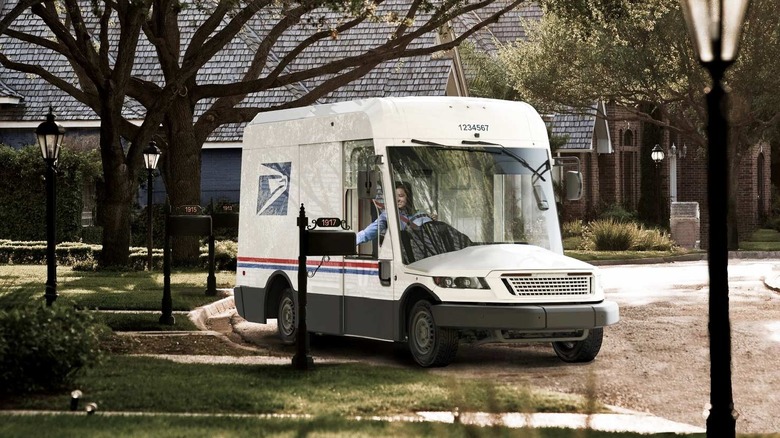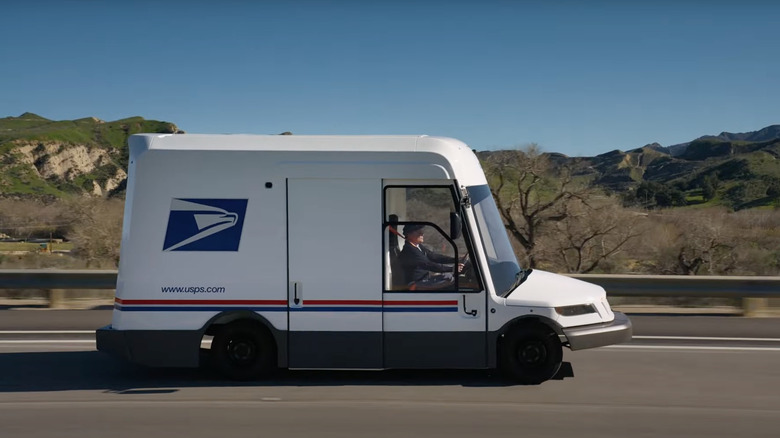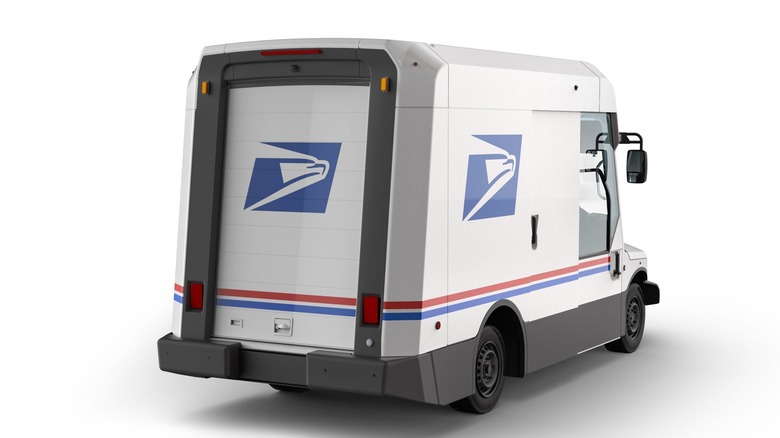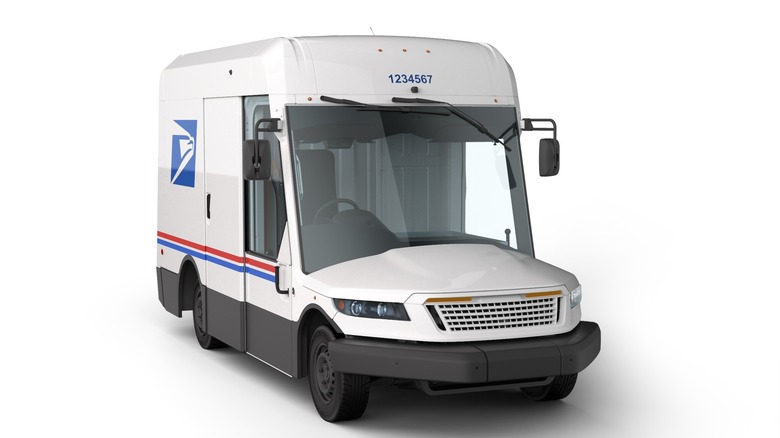3 Big Upgrades Found In The New USPS Mail Trucks
The classic U.S. Postal Service truck, the instantly recognizable Grumman LLV (Long-Life Vehicle), is set to be phased out by a newcomer to mail delivery, the Next-Generation Delivery Vehicle (NGDV). The LLV has been around since 1986 and stopped production in 1994, so at the "newest," these sturdy mail trucks are 30 years old. No wonder a new mail delivery vehicle is coming — in fact, in some parts of the country, it's already here.
The old mail truck, while rugged and dependable, wasn't a lot more than an aluminum box on a General Motors small-truck chassis. Creature comforts, like air conditioning, it did not have. The NGDV, made by Oshkosh Defense, seeks to be not only more comfortable for some of the most important government personnel — postal workers — but significantly more useful for the job of making sure your mail is on time and safely delivered. Aside from the notable advantage of being produced this century, what improvements does the NGDV employ?
Improvements to safety
Driving a mail truck is a lot different than a commuter car. You need to make hundreds of stops a day, you're seated on the right-hand side to better reach mailboxes, and you aren't driving as fast. But the NGDV is expected to be much safer than the outgoing LLV because of a number of features that first debuted in consumer cars.
The NGDV is equipped with parking sensors, a 360-degree camera system so carriers can keep an eye on their cargo and navigate tight spaces, blind-spot warnings, airbags, forward collision warnings, and automatic emergency braking. While there's no replacement for skilled and safe driving, sensors and monitors can take a huge burden off the already hard-working postal driver's mind.
The commitment to safety even extends to the overall shape of the vehicle. Its huge front windshield is great for visibility, and its taller profile gives the driver a better look at any potential dangers in the road.
Ergonomics are key
Ergonomically and logistically, the NGDV is a step up. The outgoing mail trucks carried with them all of the ergonomically sensibility of a small seat and a steering wheel — that is, not much — and such amenities as a small fan for cooling. The NGDV, on the other hand, is designed to be as comfortable as possible. It's essentially a rolling office and drivers will get up and move around dozens (or potentially hundreds) of times over the course of a day's route, so an ergonomically well-thought-out cabin is a must. This one is equipped with cupholders, air conditioning, heating, touch-screen infotainment and head-up display. Plus, there are adjustable bins and storage areas in the cabin.
The interior has been widened and heightened to allow for up to 6 feet, 4 inches of interior height, allowing most drivers to stand up while sorting mail. Additionally, the tall side windows let the driver more easily lean out to get to a mailbox or otherwise hand off the mail. And the NGDV has 263 feet of usable cargo capacity. For comparison, a Subaru Outback Touring XT, a vehicle notable for its usability, has a maximum cargo capacity of only 75.6 cubic feet.
More efficient than ever
The old Grumman LLV was a gas-powered vehicle about as efficient as a small truck from the late 1980s. It was equipped with a 2.5-liter four-cylinder that made a grand total of 92 horsepower, and although exact fuel economy numbers are not available, a Chevy S10 with the same engine only was able to achieve 18 miles per gallon in city driving. That's not stellar.
By contrast, when Oshkosh first got the order for 50,000 NGDVs, over 10,000 were to be EVs. That number was later upped to 35,000. An EV drivetrain is quite a lot more efficient than a 30-year-old four-cylinder.
The NGDV's looks might be an acquired taste over the now-iconic Grumman LLV, but it's safer to drive, more comfortable, and more efficient than the old metal box you know and love. Some might be sad to see the LLV retire, but the specifications speak for themselves.



